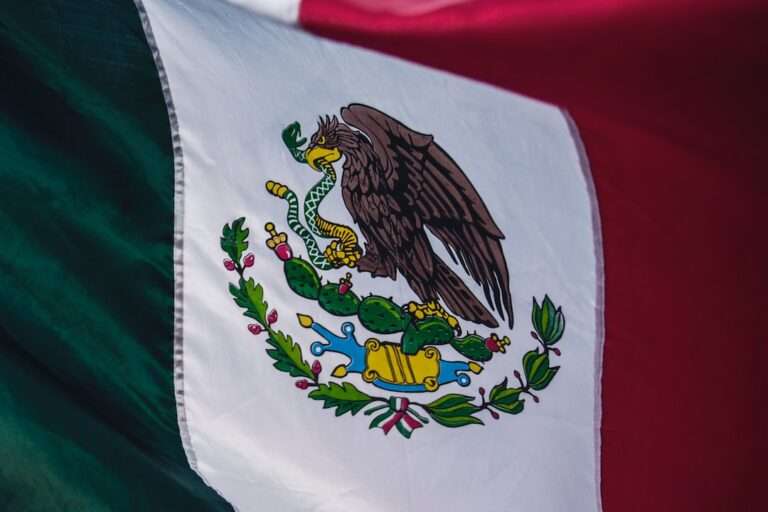Rising from the Ashes: Exploring the Symbolism of the Phoenix

The Phoenix is a mythical bird that has been a symbol of rebirth and renewal for centuries. It is said to have the ability to rise from its own ashes, representing the cycle of life, death, and rebirth. The Phoenix mythology has captivated people from different cultures and religions, and its symbolism has been depicted in various forms of art and literature.
Key Takeaways
- The Phoenix is a mythical bird known for its ability to resurrect from its own ashes.
- Fire and ashes are important symbols in Phoenix mythology, representing destruction and rebirth.
- The Phoenix mythology has evolved over time and is present in various cultures and religions.
- The Phoenix is a significant symbol in literature, art, and popular culture, representing renewal and transformation.
- The Phoenix is often interpreted psychologically as a symbol of personal growth and overcoming challenges.
The Symbolism of Fire and Ashes in the Phoenix Mythology
Fire and ashes play a crucial role in the Phoenix myth. According to the legend, the Phoenix builds a nest of twigs and sets it on fire, burning itself along with the nest. From the ashes, a new Phoenix emerges, reborn and rejuvenated. This symbolism of fire and ashes represents destruction and transformation, as well as the idea that something new can arise from the remnants of what was once destroyed.
The significance of fire and ashes in the symbolism of the Phoenix lies in their association with purification and renewal. Fire has long been seen as a purifying force, capable of burning away impurities and allowing for new growth. Ashes, on the other hand, represent the remnants of what once was, serving as a reminder of the past while also providing fertile ground for new beginnings.
The Origin and Evolution of the Phoenix Mythology
The origins of the Phoenix mythology can be traced back to ancient Egypt. In Egyptian mythology, the bird was known as Bennu and was associated with the sun god Ra. It was believed to have created itself from fire and to have lived for hundreds of years before being consumed by flames and rising again from its own ashes.
Over time, the myth of the Phoenix spread to other cultures and underwent various changes. In Greek and Roman mythology, for example, the Phoenix was associated with immortality and was said to live for 500 years before being reborn. In Chinese and Japanese mythology, the bird was known as Fenghuang and was seen as a symbol of virtue, grace, and prosperity.
The Phoenix in Different Cultures and Religions
| Culture/Religion | Phoenix Name | Symbolism | Associated Elements |
|---|---|---|---|
| Ancient Egypt | Bennu | Rebirth, Renewal, Sun God | Sun, Fire, Water |
| Chinese | Fenghuang | Harmony, Prosperity, Feminine Power | Fire, Water, Earth, Metal, Wood |
| Greek | Phoenix | Immortality, Resurrection, Sun God | Fire, Sun |
| Christianity | Phoenix | Resurrection, Eternal Life | Fire, Holy Spirit |
| Japanese | Hō-ō | Grace, Longevity, Good Fortune | Fire, Wind |
The Phoenix has played a significant role in the mythologies of different cultures and religions. In ancient Egyptian mythology, the bird was associated with the sun god Ra and was seen as a symbol of resurrection and eternal life. It was believed that the Phoenix would rise from its own ashes every 500 years, signaling the beginning of a new era.
In Greek and Roman mythology, the Phoenix was associated with immortality and was said to live for 500 years before being consumed by flames and rising again from its own ashes. It was seen as a symbol of renewal and regeneration, representing the cyclical nature of life.
In Chinese and Japanese mythology, the Phoenix, known as Fenghuang, was seen as a symbol of virtue, grace, and prosperity. It was often depicted alongside the dragon, representing the balance between yin and yang.
The Phoenix also holds significance in Christianity and other religions. In Christianity, it is often associated with resurrection and eternal life, symbolizing the death and resurrection of Jesus Christ. In Hinduism, the bird is known as Garuda and is considered to be the king of birds, representing power and strength.
The Significance of the Phoenix in Literature and Art
The symbolism of the Phoenix has been depicted in various forms of literature and art throughout history. In ancient Greek literature, for example, the Phoenix was often mentioned in poems and plays as a symbol of immortality and rebirth. The Roman poet Ovid wrote about the Phoenix in his epic poem “Metamorphoses,” describing its cycle of death and rebirth.
In art, the Phoenix has been depicted in paintings, sculptures, and tapestries. One famous example is the “Phoenix Rising from the Ashes” tapestry, which was created in the 16th century and is now housed in the Vatican Museums. The tapestry depicts the Phoenix emerging from a pile of ashes, symbolizing the cycle of life, death, and rebirth.
The Phoenix as a Symbol of Rebirth and Renewal

The Phoenix represents the cycle of life, death, and rebirth, making it a powerful symbol of renewal and transformation. It reminds us that even in the face of destruction and loss, there is always the potential for new beginnings.
The symbolism of the Phoenix can be seen as a metaphor for personal growth and transformation. Just as the Phoenix rises from its own ashes, we too have the ability to rise above our challenges and emerge stronger and wiser. The Phoenix teaches us that even in our darkest moments, there is always hope for a brighter future.
The Phoenix as a Metaphor for Personal Growth and Transformation
The Phoenix has inspired countless individuals to use its symbolism as a metaphor for their own lives. Many people have found solace and strength in the idea that they can rise above their struggles and start anew.
For example, someone who has experienced a traumatic event or a major setback in their life may find comfort in the symbolism of the Phoenix. They may see themselves as going through a process of destruction and rebirth, shedding their old self and emerging stronger and more resilient.
The Psychological Interpretation of the Phoenix Symbolism
From a psychological perspective, the symbolism of the Phoenix can be interpreted as representing the process of individuation. Individuation is a concept developed by Swiss psychologist Carl Jung, which refers to the process of becoming one’s true self.
The Phoenix represents the journey of self-discovery and self-transformation. It symbolizes the need to confront and integrate our shadow selves—the parts of ourselves that we may find difficult to accept or acknowledge—in order to become whole.
The relevance of the Phoenix symbolism in modern psychology lies in its ability to inspire individuals to embrace their own personal growth and transformation. By recognizing and accepting the darker aspects of ourselves, we can begin the process of healing and self-actualization.
The Phoenix in Popular Culture and Entertainment
The symbolism of the Phoenix has been widely used in popular culture and entertainment. It has appeared in movies, TV shows, video games, and even in the names of sports teams.
One notable example is the character Jean Grey from the X-Men comics and movies. Jean Grey is a mutant with telepathic and telekinetic powers, and she becomes the host for the cosmic entity known as the Phoenix Force. The Phoenix Force grants her immense power but also threatens to consume her. Jean Grey’s struggle with the Phoenix Force is often seen as a metaphor for personal growth and transformation.
Another example is the Harry Potter series, where the Phoenix is depicted as a loyal and powerful creature that can be reborn from its own ashes. The Phoenix plays a significant role in the story, symbolizing hope, resilience, and the power of love.
The Enduring Appeal of the Phoenix Symbolism
The Phoenix mythology and symbolism have captivated people from different cultures and religions for centuries. Its representation of rebirth, renewal, and personal growth continues to resonate with individuals today.
The Phoenix reminds us that even in our darkest moments, there is always hope for a brighter future. It teaches us that we have the power to rise above our challenges and emerge stronger and wiser.
Whether it is through ancient myths, literature, art, or popular culture, the symbolism of the Phoenix continues to inspire and uplift people around the world. Its enduring appeal lies in its ability to remind us of our own potential for transformation and renewal.
If you’re fascinated by the symbolism of the phoenix, you might also be interested in exploring the symbolism of the moon. The moon has long been associated with mystery, femininity, and intuition. It represents the cyclical nature of life and is often seen as a symbol of transformation and rebirth, much like the phoenix. To delve deeper into the symbolism of the moon, check out this insightful article on symbolismhub.com.
FAQs
What is the Phoenix?
The Phoenix is a mythical bird that is said to have the ability to rise from its own ashes and be reborn.
What does the Phoenix symbolize?
The Phoenix is a symbol of rebirth, renewal, and resurrection. It represents the cycle of life, death, and rebirth.
What cultures have used the Phoenix as a symbol?
The Phoenix has been used as a symbol in many cultures, including ancient Egypt, Greece, Rome, China, and Japan. It is also a symbol in Christianity and Judaism.
What is the origin of the Phoenix symbol?
The origin of the Phoenix symbol is unclear, but it is believed to have originated in ancient Egypt or Greece.
What are some common Phoenix symbols?
Some common Phoenix symbols include the bird itself, flames, the sun, and the color red or gold.
What is the significance of the Phoenix rising from its ashes?
The Phoenix rising from its ashes represents the idea of new beginnings and starting over. It is a symbol of hope and renewal.
What is the Phoenix’s role in mythology?
In mythology, the Phoenix is often associated with the sun and is said to live for 500 years before burning itself to ashes and being reborn. It is also said to have healing powers and to be a symbol of immortality.
What is the Phoenix’s role in popular culture?
The Phoenix has been featured in many works of literature, art, and film. It is often used as a symbol of transformation and personal growth.





